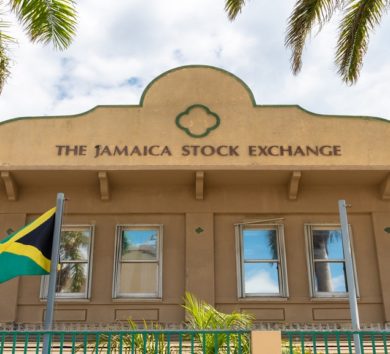
“The best way you can predict the future is to create it.”
Sounds too good to be true right? Well, it probably is, but what if there was a better strategy to minimise your portfolio losses or even generate positive returns during the coronavirus pandemic. What would this strategy look like?
Traditional portfolio approach
Traditionally, fund managers have been using the capital-weighted approach to generate returns on behalf of investors. This approach typically involves the inclusion of only stocks and bonds within a portfolio, where both assets are allocated based on the age of the investor or the mandate of the fund(s). The traditional approach, at its simplest level, suggests that the current age of the investor be subtracted from 100, which will then determine the per cent allocation of stock that an investor should have; this creates a high concentration risk and is not true diversification; a 60/40 allocation mix is typically used. Time and time again, it has been observed that this strategy does not perform well during certain economic seasons such as recessions, deflation and hyperinflation. So, is there a better way?
The all-weather portfolio strategy
The All-Weather-Portfolio is a strategy that tends to perform well during favorable and unfavorable economic seasons. This strategy was the brainchild of billion-dollar investor Ray Dalio, the founder of Bridgewater Associates, the largest hedge fund in the world, with over US$138 billion in assets under management.
The strategy was created out of the concept of risk parity, which is essentially the balancing of risk rather than capital. Backtesting this strategy reveals that it does generally live up to its name. The strategy has produced just under 10 per cent annually and has made positive returns more than 85 per cent of the time in the last 30 years between 1984 and 2013. According to Dalio’s theory, there are only four economic conditions in which asset prices are affected; economic growth, economic decline, inflation and deflation.
Because there are only four possible economic seasons, this means 25 per cent of risk (not capital) should be spread across the four quadrants. The strategy translates this into an asset allocation mix of 30 per cent Stocks, 40 per cent Long-term Bonds, 15 per cent Medium or Intermediate-Term Bonds, 7.5 per cent Gold and 7.5 per cent Commodities. Is this strategy better than the traditional approach?

Traditional vs All-Weather portfolio in practice
Let’s create two portfolios, A and B, to see what this would look like in practice and how the all-weather portfolio would have matched up to a traditional portfolio.
Portfolio A represents the Traditional Portfolio and would consist of two asset classes; the JSE Combined Index to represent a diversified mixture of equities and the iShare 7-10 Year Treasury Exchange-Traded Fund (ETF) to represent bonds. Assuming the investor is 40 years of age, a 60/40 allocation mix would be used i.e. 60 per cent equities and 40 per cent bonds.
Portfolio B represents the All-Weather Portfolio and would consist of four asset classes. Vanguard Total Stock Market ETF would represent equities, iShares 20+ Year Treasury ETF would represent long-term bonds, iShare 7-10 Year Treasury ETF would represent medium-term bonds, SPDR Gold Shares ETF to represent Gold and the iShare S&P GSCI Commodity Indexed Trust to represent commodities. An allocation mix of 30 per cent, 40 per cent, 15 per cent, 7.5 per cent and 7.5 per cent would be used respectively.

Portfolio performance during COVID-19
During the period of January 31, 2020—which is roughly when the coronavirus began to have negative impacts on the global economy—to August 31, 2020, Portfolio A would have generated a weighted average return of -35.9 per cent (i.e. if an investment of $100,000 was subscribed to this fund, the investor would have lost $37,339; neglecting subscription fees, other associated costs and the withdrawal and any additions of capital).
However, Portfolio B would have generated a weighted average return of 9.1 per cent (i.e. if an investment of $100,000 was subscribed to this fund, the investor would have gained $9,131 during the same period.
It is important to note that if this strategy was backtested using the same period of the prior year (2019), Portfolio B would have still outperformed portfolio A. The weighted average returns of Portfolio A and B were 7.2 per cent and 13 per cent respectively.
It is evident that there are some gaps with the traditional approach to asset allocation, largely due to the fact that it does not expose investors to other asset classes such as gold and commodities; which are assets that tend to appreciate during times of uncertainty. It would be reckless to say that the All-Weather Fund Strategy will generate positive returns throughout the course of the pandemic; despite backtesting it is not a foolproof strategy. However, it is a strategy worth considering.
It is now more important than ever for investors to consult with their trusted advisers and fund managers to review opportunities to maximise their returns.
This article was contributed by Victoria Mutual Wealth Management.







Comments